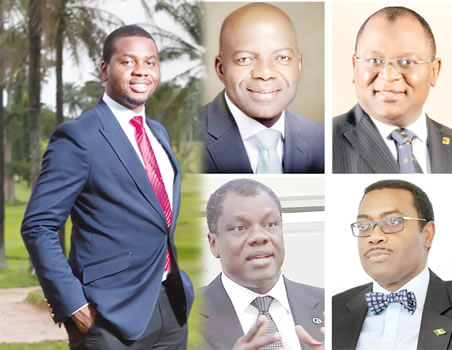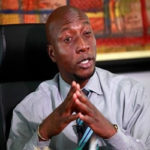
Before Orville and Wilbur Wright started working on building their aircraft, Samuel Pierpont Langley had covered considerable ground in the effort to fly the first aircraft. Langley was a Professor of Mathematics at the United States of America Naval Academy. He had previously been an Assistant at the Harvard College Observatory and an accomplished astronomer. He was named the third Secretary of the Smithsonian Institution in 1887. When it became known that he was doing a study on aircraft invention, support came from every angle. William McKinley, 25th President of the United States of America, lauded his effort, while the War Department, now known as the Department of Defense, gave him a grant of $50,000 to facilitate the conduct of his study on a larger scale.
Langley made great strides in his endeavour, which he named ‘aerodrome’. In 1893, he tried to fly the machine but it failed because it was unmanageable in a breeze. He had three other attempts with similar results. His fifth attempt recorded some success as the aerodrome flew for a few seconds reaching a height of 35 feet. His sixth attempt was better than the fifth, as the ‘aerodrome’ was able to reach a height of 4,800 feet in less than two minutes before crashing. After much innovation and an investment of over $70,000, he had his seventh attempt in 1903. The machine went up only to head down into Potomac River after a short while. Undeterred, he went back to work, corrected the observed lapses and set the machine for another flight trial. In the first week of December 1903, Langley made his eighth attempt at flying his aircraft. Again, the ‘aerodrome’ crashed into Potomac River. At that point, Langley gave up. He decided to call it quits with trying to invent the aircraft. He cut his losses, disbanded his team and returned to his teaching job.
However, on December 17, 1903, just a few days after Langley threw in the towel, Orville and Wilbur Wright, who had been working on a similar project in Kitty Hawk, North Carolina, for over four years with a series of infuriating and exasperating disappointments and setbacks, were able to fly their aircraft successfully. Thus, the credit for inventing, building and flying the world’s successful aircraft went to the Wright Brothers.
Professor Langley was so close to success but was deprived of its sweet taste because he was not hungry enough for it. The Wright brothers’ refrain while working on their project was “What a difference it would make if only we could get this machine flying.” They were so hungry to make an impact that neither failure nor disappointment was strong enough to stop them. They considered every setback as a learning curve. They were so hungry to make an impact that they did not give much thought to their pains and disappointment. The brothers were driven by hunger for success to the extent that they were willing to pay any price and make any sacrifice for it.
On the contrary, while Langley wanted success, he was not hungry for it. He did not want success at any cost. Though he desired to be the first man to build, invent and successfully fly an aeroplane, he did not want that to the exclusion of every other thing. Therefore, when push came to shove, he let go of his desire. As a consequence, he lost the trophy to a really hungry duo.
Hunger is the bedrock of success
Hunger is deeper and stronger than desire. Desire may brood excuses and exceptions but not hunger. Desire may succumb to adversity or difficulty but not hunger. While desire is hinged on necessity, hunger is founded on existence. When a person is hungry, the brain blocks the thought of every other thing; the only thing the hungry person can think of is food. He will not give up on his search for food until he either gets it or dies trying. When a lion is hungry, every animal in the jungle becomes endangered because there won’t be respite until the king of the jungle satisfies its hunger.
Hunger for success blurs difficulties
Every endeavour comes with its peculiar challenges. While some people make the challenges their focus and are unable to see any other thing thus finding it difficult to make progress, others look beyond the challenges and concentrate on their target. Those who are hungry for impact belong to the latter group. Their hunger to achieve what they set out to accomplish is so strong that it blurs every difficulty and renders every setback inconsequential. They scale the hurdles set by failure, setback, disappointment and even calamity without losing their fervor. That is what happened to Soichiro Honda, founder of Honda Motors.
Honda was driven by the hunger to make his mark in the automobile industry. In 1924, he designed a new piston ring which not many experts gave a chance given the designs in vogue at the time. But Honda was not bothered by experts’ opinions. He invested the whole of his life savings on the project. When that was not enough, he pawned his wife’s jewelry and put the proceeds in the project. Eventually, he got his vehicle out but initially the product was spurned. After a while, the car became the preference of Japan and other Asian countries.
As he was reveling in his success, his main factory was destroyed during World War II by United States bomber planes in 1944. As if that was not bad enough, the following year, his second factory was leveled by an earthquake.
If Soichiro Honda had given up at this point, he would have been forgiven by the world but his vision would also have become history. But he was driven by the hunger to make an impact. So, rather than give up, he started the process of building again. This time, the building was at a faster pace because he had already built a reputation. Honda Motors bounced back and it has been growing strong since then. To the credit of Soichiro Honda, the company that almost died as a dream posted a profit of $2.86billion in 2016.
How to develop hunger for success
Hunger for success does not just arise, it has to be developed. Here are steps to develop hunger for success.
Focus on an area
To make impact, you have to focus on a specific area. Failure to identify an area where to make the most impact is the bane of many people and organizations. Those who excel are usually known for one or a few things, not all things. No one can be everything to everyone. No organization can excel in everything. So, pick an area where you want to make an impact and focus on it.
Diffused light has no effect. But concentrated light, when passed through a magnifying glass, can burn a paper or even a fresh leaf. When light is more focused, it becomes a laser and laser can burn steel and destroy cancer.
So, focus is important. The ability to stay focused increases hunger for impact.
Convince yourself on the importance of your focus
While the Wright brothers were working on their invention, their concern was the improvement that the invention would precipitate on completion. They were so much looking forward to seeing their machine fly that the number of times they failed in that attempt meant nothing to them. While the project was in progress, they were derided by those who considered their effort a waste of time. But they were comforted by their understanding of the relief the aircraft would bring to distant travelers once it was completed.
Look beyond bread and butter
The desire for immediate gratification is the cemetery of many great ideas. Many otherwise outstanding ideas fall through because the sponsors want to turn them into money overnight. They are in what they do for the immediate benefits. Those who have such disposition hardly make any lasting impact. Those who are motivated by hunger for impact are not enslaved by immediate gratification. They are willing to trade their present for a more assured future.
The race for impact is a marathon, not a sprint. Those who are in a hurry are likely going to crash before reaching the finishing line.
Don’t go about with a sense of accomplishment
It was easy for Professor Langley to abandon the aircraft project on which he had invested over 10 years because he was already an accomplished man. While being the first to build and fly an aeroplane would have increased his social and professional relevance, without that tag, he would still have been regarded as a force to reckon with in the society. But the Wright brothers were not as accomplished as Langley. They were bicycle engineers who just managed to get by. So, apart from wanting to improve the way people lived by their invention, getting it done was also necessary to improve their own lives. Therefore, they knew that irrespective of how many times they failed in the attempt, getting it right would more than compensate for their investment of time and other resources.
Burn the bridges behind you
In the book Tough Times Don’t Last But Tough People Do, Robert Schuller counsels against quitting when the tide turns tough. He says every adversity comes with its own advantage and only those who stay through the difficult times are positioned to reap the benefits when the tide becomes favourable. Staying through tough times is possible for those who do not have any alternative. Many people who go into ventures or projects usually have a Plan B to which they can return should the project turn awry. But having a Plan B is oftentimes a recipe for failure. Failing to burn all the bridges gives room to doubts, affects concentration and may adversely impact performance. Those who do not have any alternative are able to deploy the whole of their energy and ability to what they do and they more often than not get their desired result in the end.
Last line
Those driven by hunger for impact stop at nothing until they achieve their target.





